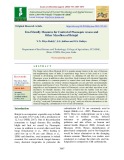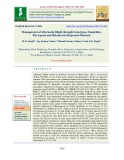
Fungicide resistance
-
Part 2 book "Concise encyclopedia of plant pathology" includes content: Breeding for disease resistance - genetic engineering; chemical control - Bacterial diseases; chemical control—fungal diseases; chemical control - fungicide application equipment; chemical control - virus diseases; cultural methods, exclusion and eradication, plant activators, plant extracts,... and other contents.
 327p
327p  muasambanhan02
muasambanhan02
 25-12-2023
25-12-2023
 4
4
 2
2
 Download
Download
-
The main mechanism of resistance in A. fumigatus involves incorporation of tandem repeats in the promoter region of cyp51A, along with point mutations in the gene sequence. Resistant isolates tend to arise either due to excessive use of azole fungicides in the agricultural fields, from where they reach human through sporulation; or by prolonged treatment of patients with azole drugs. The early diagnosis of aspergillosis is very crucial for successful treatment of a patient.
 8p
8p  mudbound
mudbound
 10-12-2021
10-12-2021
 6
6
 1
1
 Download
Download
-
The aim of this study was to evaluate the antimicrobial activity of three commercial GSE (Grapefruit Seed Extract) products against six bacterial and one fungal strain, through the agar well diffusion method, determination of minimum inhibitory concentration (MIC), minimum bactericidal concentration (MBC), and minimum fungicidal concentration (MFC). Obtained results indicate strong antimicrobial effects of investigated extracts, with different microbial susceptibility, including the multidrug-resistant (MDR) bacteria.
 4p
4p  mudbound
mudbound
 10-12-2021
10-12-2021
 11
11
 1
1
 Download
Download
-
Penicillium italicum (blue mold) is one of citrus pathogens causing undesirable citrus fruit decay even at strictly-controlled low temperatures (< 10 °C) during shipping and storage. P. italicum isolates with considerably high resistance to sterol demethylation inhibitor (DMI) fungicides have emerged; however, mechanism(s) underlying such DMI-resistance remains unclear.
 16p
16p  vijeeni2711
vijeeni2711
 24-07-2021
24-07-2021
 6
6
 0
0
 Download
Download
-
Blue mold is a globally important and economically impactful postharvest disease of apples caused by multiple Penicillium spp. There are currently four postharvest fungicides registered for blue mold control, and some isolates have developed resistance manifesting in decay on fungicide-treated fruit during storage.
 15p
15p  vijeeni2711
vijeeni2711
 30-06-2021
30-06-2021
 14
14
 1
1
 Download
Download
-
The fungicide fludioxonil over-stimulates the fungal response to osmotic stress, leading to overaccumulation of glycerol and hyphal swelling and bursting. Fludioxonil-resistant fungal strains that are null-mutants for osmotic stress response genes are easily generated through continual sub-culturing on sub-lethal fungicide doses.
 15p
15p  vilichoo2711
vilichoo2711
 25-06-2021
25-06-2021
 9
9
 1
1
 Download
Download
-
Common scab caused by Streptomyces scabies (Thaxter) Waksman & Henrici is an important disease worldwide, and can cause significant reduction in the economic value of potato. The management of the disease can be done through conventional methods, biological chemical and cultivation of resistant variety. However, resistance against pathogen is not a permanent solution and fungicidal is not ecofriendly and economical. But new search, induce resistance has taken great attention for plant disease management in near future.
 9p
9p  trinhthamhodang11
trinhthamhodang11
 27-04-2021
27-04-2021
 8
8
 1
1
 Download
Download
-
Trichoderma spp. are tolerant and compatible with fungicides, biofertilizers and other bio pesticides. Integrating fungicide resistant antagonists with suitable fungicide treatment has importance in the frame work of integrated disease management. Incorporation of natural products provides a viable solution to the environmental problems caused by synthetic pesticides. Identification of these compounds and their further testing may be an effective approach to minimize the use of hazardous chemicals
 5p
5p  trinhthamhodang1216
trinhthamhodang1216
 19-11-2020
19-11-2020
 10
10
 1
1
 Download
Download
-
Black gram anthracnose caused by Colletotrichum lindemuthianum is the most devasting disease. Due to its severe infection during humid climatic conditions spraying of chemical fungicides is essential to control the disease. Frequent application of synthetic chemicals, leads to the detoriation of environment and development of resistance. The present study was carried out to manage black gram anthracnose pathogen using plant extracts.
 7p
7p  caygaocaolon7
caygaocaolon7
 18-09-2020
18-09-2020
 21
21
 1
1
 Download
Download
-
This paper regard experiments were carried out to test different fungicides and botanicals for their effectiveness against the pathogen and to identify the resistant variety against purple blotch of onion.
 9p
9p  cothumenhmong7
cothumenhmong7
 08-09-2020
08-09-2020
 10
10
 1
1
 Download
Download
-
Turcicum leaf blight (TLB) or Northern Corn Leaf Blight (NCLB) is a ubiquitous foliar disease of corn (maize) caused by Exserohilum turcicum, the anamorph of the ascomycete Setosphaeria. The TLB fungus survives through the winter on infected maize residue at the soil surface. As temperatures rise in the spring and early summer, the fungus produces spores on residue, and then the spores are splashed or wind-blown onto leaves of the new maize crop. Infection occurs during periods of moderate (64° to 81°F), wet and humid weather.
 7p
7p  chauchaungayxua6
chauchaungayxua6
 26-06-2020
26-06-2020
 17
17
 1
1
 Download
Download
-
Maize is the 3rd most important crop in the Bihar next to rice and wheat. It is grown throughout the year in one or other part of state. Due to continuous cropping of maize and other factors like improper use of fertilizers, pesticides and climate change, the disease problem has increased in tremendous proportion. Almost all parts of the maize plant are susceptible to numerous diseases that considerably reduce the yield and quality of the crop.
 13p
13p  angicungduoc5
angicungduoc5
 14-06-2020
14-06-2020
 11
11
 0
0
 Download
Download
-
A field experiment was conducted during Kharif 2017-2018 to study the effect of tropical red seaweed (Kappaphycus alvarezii) bioformulations (LBS 6 and LBD 1 in relieving the fungicidal stress and imparting the resistance to blast disease) in rice. Foliar application of LBS6 @ 1 ml/l was found to be statistically superior in improving yield parameters viz., straw (6.94 kg/plot) and grain weight (5.59 kg/plot).
 8p
8p  nguathienthan5
nguathienthan5
 04-06-2020
04-06-2020
 8
8
 1
1
 Download
Download
-
In modern agriculture, the call for an alternative crop protection strategy increases because of the desired reduction of fungicide and pesticide use and the continuously evolving resistance of pathogens and pests to agrochemicals.
 11p
11p  vihashirama2711
vihashirama2711
 21-05-2020
21-05-2020
 13
13
 0
0
 Download
Download
-
The present experiment was planned integrated management of root rot pathogen in chickpea. Occurrence of root rot disease has become a major constraint in recent years for successful and profitable cultivation of chickpea. The efficacy of Bio-agent viz. Tricoderma viride, Organic amendment viz. neem cake, Plant extract, garlic, and Fungicide, Carbendanzim applied through seed treatment and soil application were evaluated against Macrophomina phaseolina causing root rot disease of Chickpea.
 8p
8p  nguaconbaynhay5
nguaconbaynhay5
 16-05-2020
16-05-2020
 18
18
 0
0
 Download
Download
-
The brinjal variety Hisar Shyamal (H-8) is popular among farmers in the state of Haryana and neighbouring states of India. It experiences huge losses in fruit yield as it is not resistant to devastating seed borne diseases viz. damping off and fruit rot caused by Phomopsis vexans in addition to other mycoflora. Seed treatment with chemical fungicides like carbendazim is a common practice to control these seed borne diseases of brinjal. However, continuous use of these chemical fungicides are not safe both environmentally and human health point of view.
 7p
7p  kequaidan4
kequaidan4
 05-05-2020
05-05-2020
 8
8
 1
1
 Download
Download
-
Fusarium head blight (FHB) is a major disease of cereal crops, caused by the fungal pathogen Fusarium graminearum and related species. Breeding wheat for FHB resistance contributes to increase yields and grain quality and to reduce the use of fungicides.
 9p
9p  viharuno2711
viharuno2711
 21-04-2020
21-04-2020
 10
10
 0
0
 Download
Download
-
Alternaria blight caused by Alternaria brassicae (Berk) Sacc. and A. brassicicola (Schw) Wiltshire is one of the most common and destructive disease of rapeseedmustard. The experiments were conducted under field condition to develop effective management strategies for this disease through evaluation of genotypes for resistance and application of fungicide, bio-agents and botanical.
 7p
7p  quenchua4
quenchua4
 16-04-2020
16-04-2020
 13
13
 1
1
 Download
Download
-
Trichoderma spp. are the most successful biocontrol agents as more than 60% of the registered bio-fungicides used in today‟s agriculture belongs to Trichoderma-based formulation. Plant-Trichoderma-pathogen is a complex network of multiple mechanisms. Presently many labs tried to dissecting the networking of three way cross talk in PlantTrichoderma-Pathogen interaction.
 17p
17p  quenchua4
quenchua4
 16-04-2020
16-04-2020
 2
2
 0
0
 Download
Download
-
The foundation of sheltered and compelling strategies for controlling contagious fungal diseases is a pressing issue in farming sector. Fungicide inquire about has furnished a wide scope of products with new methods of activity. Fungicides have significantly added to supporting quality nourishment generation through securing an assortment of harvests from contagious maladies. Be that as it may, such creation is frequently undermined by the event of pathogen strains resistant to fungicides.
 13p
13p  nguaconbaynhay4
nguaconbaynhay4
 22-03-2020
22-03-2020
 21
21
 1
1
 Download
Download
CHỦ ĐỀ BẠN MUỐN TÌM








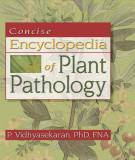
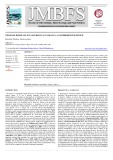



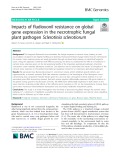


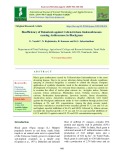
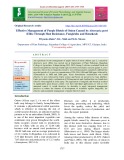

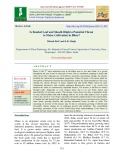


![Integrated management and host plant resistance against dry root rot [Macrophomina phaseolina (Tassi.) Goid] of chickpea Integrated management and host plant resistance against dry root rot [Macrophomina phaseolina (Tassi.) Goid] of chickpea](https://tailieu.vn/image/document/thumbnail/2020/20200516/nguaconbaynhay5/135x160/1181589615649.jpg)
